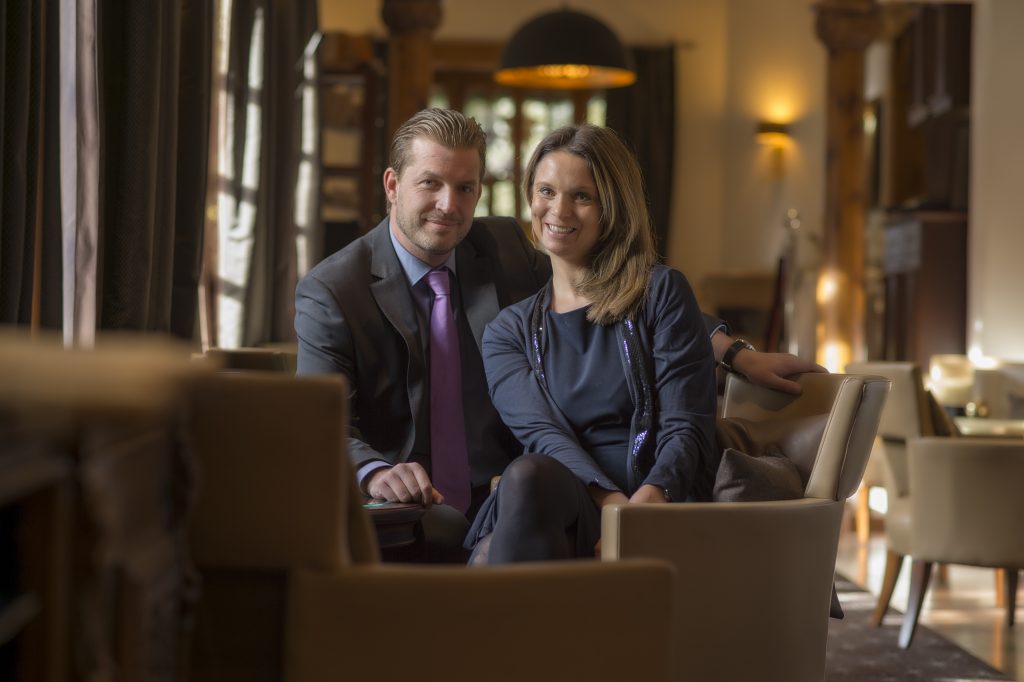Tourism pioneer Joseph Seiler: from six beds to a dynasty
It was 1847 and Zermatt was still a small village of just 400 inhabitants. At that time, only a few tourists and adventurers made it into the Mattertal, along with chaplain Joseph Seiler from Blitzingen in Goms, who was transferred to the mountain village 1620 metres above sea level. The story of the Seiler Hotels starts with him and his six beds. Joseph Seiler recognised the beauty of the mountain landscape and knew that the six beds of the only village guest house, belonging to Dr. Lauber, would not be enough for long. That was why he asked his brother Alexander, soap and candlemaker in Sitten, to follow him.
Three years later…
Alexander had hardly clapped eyes on the Matterhorn when it was all up to him. The brothers took over Doctor Lauber’s wooden chalet in 1853 and bought it from him a year later. Six beds became 35 and the chalet was renamed “Monte Rosa“. “My ancestors were real entrepreneurs who never shied away from a challenge”, says André Seiler, 42. Now general manager, he is from the fifth generation to manage the Seiler Hotels and also runs “Mont Cervin Palace“ with his wife, Simone. His father Christian Seiler continues to work as chairman and cousin Roberto Seiler manages the holding. It is still a family affair, even after 160 years. “I admire how my ancestors managed to characterise entire epochs with their visions”, says André Seiler. “The legacy they have created is irreplaceable and it is essential that it is preserved.”
Gornergrat railway: Seiler’s contribution to Zermatt’s development
Alexander Seiler was indeed brave, as he rented guest house Riffelberg, at 2,582 metres above sea level, which was built by the clergymen and, at the time, was the highest guest house in Europe. He was rewarded with success and was able to buy his rivals’ hotel “Mont Cervin” in 1867. He expanded it from 68 to 180 beds and increased the capacity of “Monte Rosa” to sleep 110. The second generation, namely Alexander II, made an important contribution to mobility in Zermatt. The qualified lawyer helped to build the Gornergrat railway. This was followed by the red tram that enabled elite guests to access the Riffelalp. Cultured company, generous buffets, five o’clock tea and dance evenings appeared and made Zermatt attractive to high society. After the premature death of Alexander II, Hermann Seiler continued to run the business. His great vision was winter tourism. The Visp-Zermatt railway was operated in winter for the first time in 1928 and skiing came into fashion. From then on, the international clientèle kept returning every season into the present.
Seiler Dynasty: high quality & personal relationship on all levels
“Regular guests represent around 70 percent of our clientèle” says André Seiler. “We even have families that have been coming for three generations.” The Seilers have always set great store by very high-quality services and try to build a personal relationship with their guests. According to André Seiler “it is crucial in family-run, luxury hotels and definitely a reason for our success”.
“But life has not been rosy for every generation”
The third generation had it particularly tough. They lived through the Second World War, the destruction of Hotel Riffelalp by a devastating fire and a typhus epidemic. Guests are also always changing. “Today’s guests are very discerning, booking moves quickly and there is a lot of choice”, says André Seiler. The competition has also grown in 160 years. To begin with there were two hotels and now there are 110. Zermatt used to have 400 residents and there are now just under 6,000. The six beds at “Monte Rosa” have become 41 rooms. The story of the Seiler hotel dynasty, of the “Mont Cervin Palace” and “Monte Rosa”, will continue for many years.
